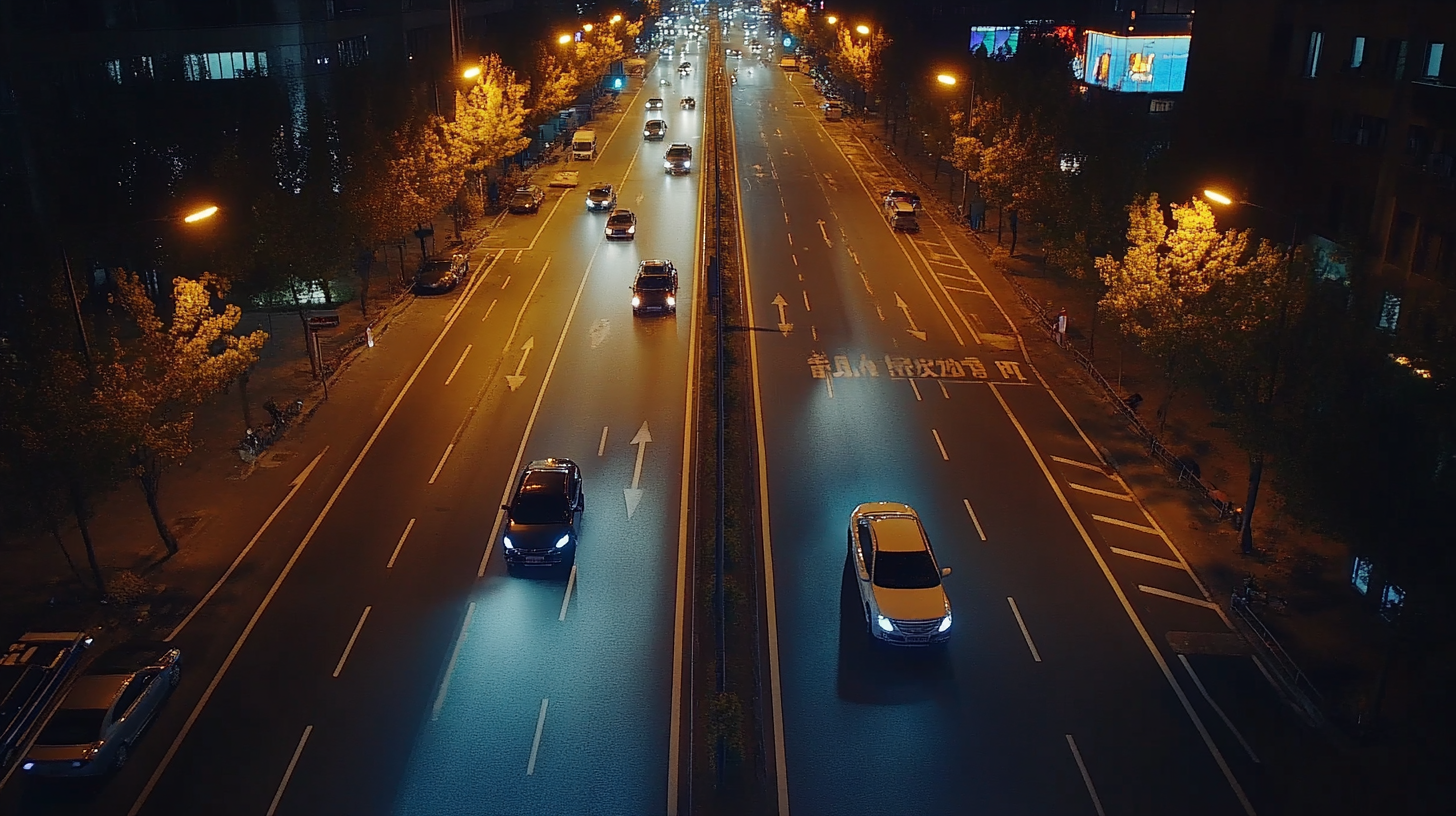The Evolution of Solar Street Lighting Solutions for Global Buyers
The global demand for renewable energy solutions has skyrocketed in recent years, driven by the urgent need for sustainable urban infrastructure. In particular, solar street lights have emerged as a pivotal component in this energy transition. According to the International Renewable Energy Agency (IRENA), investments in renewable energy technologies like solar could reach $1.5 trillion globally by 2030. This shift not only addresses energy efficiency but also enhances public safety and reduces carbon footprints in urban areas, with solar street lights playing a significant role in this evolution.
As cities strive to integrate smart technologies and more environmentally friendly practices, the advantages of solar street lighting systems become increasingly evident. A report from MarketsandMarkets projects that the solar street lighting market will grow from $3.5 billion in 2020 to $10.2 billion by 2025, highlighting a compound annual growth rate (CAGR) of 23%. This explosive growth underscores the adaptability of solar street lights to meet diverse urban needs while providing a sustainable, off-grid solution that aligns with global energy trends. As we explore the evolution of solar street lighting solutions, it is essential to examine how these developments cater to the unique demands of global buyers.

The Historical Development of Solar Street Lighting Technology
The historical development of solar street lighting technology has witnessed significant advancements, driven by the increasing demand for sustainable and energy-efficient solutions. Initially, traditional street lighting relied heavily on fossil fuels and the grid, resulting in high energy consumption and environmental concerns. However, the introduction of solar-powered street lights marked a turning point. This innovation leveraged solar panels to harness sunlight, allowing for off-grid solutions that not only reduced electricity costs but also minimized the carbon footprint. As technology progressed, solar street lights evolved to incorporate smart features such as motion sensors, LED lighting, and IoT connectivity. These advancements enhanced efficiency and adaptability, making solar street lighting an increasingly viable option for urban and rural areas alike. The shift towards intelligent lighting systems reflects a broader trend in urban planning and renewable energy integration, emphasizing the importance of sustainability in modern infrastructure. Events such as the upcoming SPDE2024 in Shenzhen highlight the growing interest in solar energy solutions worldwide. Exhibitions focused on solar power and distributed energy systems offer a platform for industry leaders to showcase the latest innovations in solar technologies. This global engagement underscores the collaborative efforts to enhance solar street lighting solutions, ultimately contributing to the global transition towards greener cities and improved quality of life.

Key Advantages of Solar Street Lighting Solutions for Buyers
The adoption of solar street lighting solutions has rapidly gained traction among global buyers, primarily due to their myriad advantages over traditional lighting systems. One of the most significant benefits is the reduction in operational costs. Solar street lights operate on renewable energy captured from the sun, eliminating the need for electricity from the grid. This not only results in substantial energy savings but also minimizes long-term maintenance expenses associated with wiring and hardware.
Another key advantage lies in the environmental impact of solar street lighting. As concern for climate change intensifies, sustainable solutions like solar lighting are becoming a priority. These systems produce zero emissions during operation, making them an eco-friendly alternative that aligns with global efforts to reduce carbon footprints. Moreover, solar street lights enhance urban areas by improving visibility and safety without contributing to pollution.
Furthermore, the outdoor solar LED market has been experiencing significant growth and is expected to continue expanding as technology advances. Innovations in efficiency and storage solutions have made solar street lighting more reliable and accessible. Buyers are increasingly recognizing the benefits of these systems, not only for cost-effectiveness but also for their contribution to safer, greener communities. This shift indicates a strong global movement towards sustainable urban development, driven by the advantages of solar street lighting solutions.

Comparative Analysis: Traditional vs. Solar Street Lighting Systems
The comparative analysis between traditional street lighting systems and solar street lighting solutions reveals significant advantages for solar alternatives. The global solar street lighting market is projected to reach $11.1 billion by 2033, growing at a compound annual growth rate (CAGR) of 10.5%, according to Allied Market Research. This rapid growth underscores the increasing adoption of solar technology in urban planning, driven by the high efficiency and sustainability of these systems compared to conventional lighting.
Traditional street lights typically rely on grid electricity, making them vulnerable to power outages and rising electricity costs. In contrast, solar street lighting systems harness renewable energy, providing autonomy and reducing operational costs. For instance, the solar street lighting market was valued at approximately $5 billion in 2024, with expectations of a CAGR of over 7.4% from 2025 to 2034. This growth is largely attributed to advancements in solar technology, including the integration of energy-efficient LED lights that significantly cut down energy consumption.
Moreover, solar street lighting systems offer environmental benefits that traditional systems lack. By using renewable energy, they help mitigate carbon emissions and decrease reliance on fossil fuels. The increase in urbanization and the subsequent demand for energy-efficient lighting solutions has prompted municipalities to consider solar options not only as an eco-friendly alternative but also as a cost-effective long-term solution. This shift not only promotes sustainability but also fosters economic savings, attracting global buyers towards solar innovations in street lighting.

Future Trends in Solar Street Lighting Design and Innovation
The landscape of solar street lighting is undergoing a profound transformation as innovation pushes the boundaries of design and functionality. With increasing global awareness of sustainability, the future of solar street lighting is marked by an emphasis on smart technology and energy efficiency. Advanced sensors and artificial intelligence are expected to play a pivotal role in these lighting solutions, enabling adaptive brightness based on real-time conditions and enhancing safety for pedestrians and drivers alike.
Additionally, modular designs are set to become a hallmark of future solar street lighting systems. This approach allows for flexible installations and easier upgrades, ensuring that cities can adapt to evolving needs without significant overhauls. Solar panels are also becoming more efficient, with developments in photovoltaic technology allowing for reduced footprint without compromising energy output. These advancements will not only lower the costs associated with installation and maintenance but also increase the reach of solar street lighting, making it accessible to both urban and rural areas.
Furthermore, the integration of aesthetic elements into solar street lighting is gaining traction. As cities seek to balance functionality with visual appeal, design innovation will be crucial. Future models will likely incorporate artistic features and can blend seamlessly into a city’s architecture, making solar street lights not just sources of illumination but also enhancements to the urban landscape. This fusion of practicality and style paints a promising picture for the future of solar street lighting solutions globally.
Global Market Opportunities for Solar Street Lighting Products
The global solar street lighting market presents a wealth of opportunities for buyers as the demand for sustainable and energy-efficient solutions grows. With the market witnessing a significant transformation, innovative solar technologies are becoming integral components of urban and rural infrastructure. As cities around the world strive to reduce carbon footprints and enhance public safety, solar street lighting emerges as a practical and viable alternative to traditional lighting systems.
Recent forecasts highlight a robust growth trajectory for solar street lighting, projecting a compound annual growth rate (CAGR) of over 21% from 2018 to 2022. This increase is driven by heightened awareness of renewable energy benefits, reduced operating costs compared to conventional lighting, and advancements in solar technology. As manufacturers continue to innovate, products are becoming more efficient and aesthetically pleasing, appealing to a diverse range of global buyers who prioritize quality and sustainability.
Moreover, the synergy between solar street lighting and smart LED technologies enhances the functionality of these systems. As the smart LED lighting market is expected to scale up significantly, integrating these technologies with solar solutions can revolutionize urban lighting. Continued investment in research and development in this sector will pave the way for more intelligent, adaptive, and eco-friendly lighting solutions, ultimately benefiting communities worldwide.

